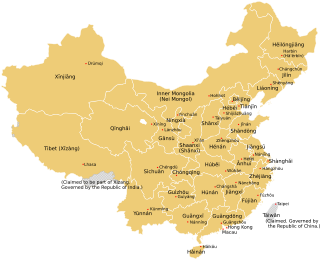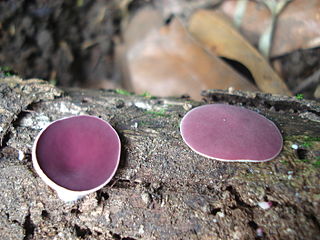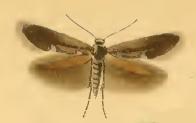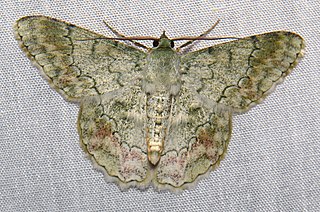
Taiwan, officially the Republic of China (ROC), is a country in East Asia. It is located at the junction of the East and South China Seas in the northwestern Pacific Ocean, with the People's Republic of China (PRC) to the northwest, Japan to the northeast, and the Philippines to the south. The territories controlled by the ROC consist of 168 islands with a combined area of 36,193 square kilometers. The main island of Taiwan, also known as Formosa, has an area of 35,808 square kilometers, with mountain ranges dominating the eastern two-thirds and plains in the western third, where its highly urbanised population is concentrated. The capital, Taipei, forms along with New Taipei City and Keelung, the largest metropolitan area in Taiwan. Other major cities include Taoyuan, Taichung, Tainan, and Kaohsiung. With around 23.9 million inhabitants, Taiwan is among the most densely populated countries in the world.

Taipei, officially Taipei City, is the capital and a special municipality of the Republic of China (Taiwan). Located in Northern Taiwan, Taipei City is an enclave of the municipality of New Taipei City that sits about 25 km (16 mi) southwest of the northern port city of Keelung. Most of the city rests on the Taipei Basin, an ancient lakebed. The basin is bounded by the relatively narrow valleys of the Keelung and Xindian rivers, which join to form the Tamsui River along the city's western border.
The controversy surrounding the political status of Taiwan or the Taiwan issue is a result of World War II, the second phase of the Chinese Civil War (1945–1949), and the Cold War.

The provincial level administrative divisions are the highest-level administrative divisions of China. There are 34 such divisions claimed by the People's Republic of China, classified as 23 provinces, five autonomous regions, four municipalities and two special administrative regions. The political status of Taiwan Province along with a small fraction of Fujian Province remain in dispute; those are under separate rule by the Republic of China, which is usually referred to as "Taiwan".
"Chinese Taipei" is the term used in various international organizations and tournaments for groups or delegations representing the Republic of China (ROC), a country commonly known as Taiwan.

The Chinese people or simply Chinese, are people or ethnic groups identified with China, usually through ethnicity, nationality, citizenship, or other affiliation.

Tsai Ing-wen is a Taiwanese politician who has served as the president of the Republic of China (Taiwan) since 2016. A member of the Democratic Progressive Party (DPP), Tsai is the first female president of Taiwan. She served as chair of the DPP from 2020 to 2022, and also previously from 2008 to 2012 and 2014 to 2018.
Passiflora subpurpurea is a species of plant in the family Passifloraceae. It is endemic to Ecuador.
Ghoria is a genus of moths in the family Erebidae.

Phillipsia is a genus of fungi in the family Sarcoscyphaceae. There are about 17 species in the genus, which collectively have a widespread distribution in subtropical and tropical areas. The genus was circumscribed by Miles Joseph Berkeley in 1881. The generic name honours Wales-born English botanist William Phillips (1822–1905).

Ghoria tecta is a moth of the family Erebidae described by Alfred Ernest Wileman in 1910. It is found in Taiwan. It was transferred from Eilema into Ghoria by Vladimir Viktorovitch Dubatolov et al. in 2012.

Heliozela is genus of moths of the family Heliozelidae. It was described by Gottlieb August Wilhelm Herrich-Schäffer in 1853.
Heliozela subpurpurea is a moth of the Heliozelidae family. It was described by Edward Meyrick in 1934. It is found in Japan.
Ghoria collitoides is a moth of the family Erebidae. It was described by Arthur Gardiner Butler in 1885. It is found in the Russian Far East, China, Korea and Japan.

Pingasa subpurpurea is a moth of the family Geometridae first described by William Warren in 1897. It is found on Borneo, the Philippines and Sulawesi.
Ghoria nigripars is a moth of the family Erebidae. It is found in eastern India and China.
Ghoria albocinerea is a moth of the family Erebidae. It was described by Frederic Moore in 1878. It is found in Sikkim, India.
Ghoria dirhabdus is a moth of the family Erebidae. It was described by Walter Rothschild in 1916. It is found on Sumatra and the Dampier Archipelago off the north-western coast of Australia.

Phillipsia subpurpurea is a species of fungus in the family Sarcoscyphaceae. It is found in Australia where it grows as a saprophyte on wood. The fungus was first described scientifically by English mycologists Miles Joseph Berkeley and Christopher Edmund Broome. Its cup-shaped fruit bodies lack stipes and have purplish interior surfaces.
The Lithosiina are a subtribe of lichen moths in the family Erebidae. The taxon was erected by Gustaf Johan Billberg in 1820.









